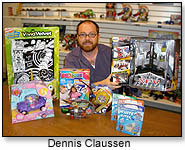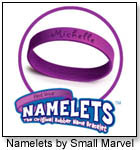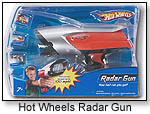 |

Tools:








The Secrets of Great Package DesignA Toy and Its Packaging Are Linked From Inception to Hit — or Miss
So you’ve created a great toy ... but how do you let the consumer know about it? In most cases, it’s the packaging: The way your toy is presented on-shelf is going to be your single most significant selling tool. TDmonthly spoke with a range of toy manufacturers about how to handle packaging, and they agreed that simplicity and visibility are key.
Getting Started: What’s Out There Now?
 “A strong marketing plan, price and competition are the three parameters all packaging concepts are based on before any design work is done,” noted Dennis Claussen, senior director of packaging for JAKKS Pacific. “A strong marketing plan, price and competition are the three parameters all packaging concepts are based on before any design work is done,” noted Dennis Claussen, senior director of packaging for JAKKS Pacific.
Similarly, at Mattel, “Brand look, product features, cost and the competitive set,” are the top-line considerations, according to Simon Waldron, the marketing director for Hot Wheels.
It’s All in the Name
So where to begin? The answer likely depends on the size of your company. For Small Marvel, a start-up that manufactures three to four products a year, it’s “The name. It’s the most important thing about the packaging,” Craig Zucker, head of product development, told TDmonthly. “It’s the thing you’re going to remember the most.”
 A simple descriptive name may fare better than something clever. Said Claussen, “Packaging structure and function supersede the name’s importance in most cases. The majority of the names created [by JAKKS] are more descriptive, speaking to the toy’s function rather than its originality.” A simple descriptive name may fare better than something clever. Said Claussen, “Packaging structure and function supersede the name’s importance in most cases. The majority of the names created [by JAKKS] are more descriptive, speaking to the toy’s function rather than its originality.”
This thinking is seconded by Waldron: “The simpler the name the better.” Therefore, a motorcycle that does a flip might be better named, say, Flipout, than GyroGrinder.
Make the Package Work Harder
Steve Varner, president of Bleeding Edge collectible dolls, said the best package is one that showcases the product well, ensuring that “it can be seen and positioned well, so that it will be intriguing when people walk by it.”
Interactivity is also compelling, and having a “try-me” built into the product often costs nothing.
 Claussen also pointed to a trend toward integrating the package with the product. For toys with no other advertising support, “keeping the toy’s only source of advertising attached to the item through its entire life cycle” makes sense. Claussen also pointed to a trend toward integrating the package with the product. For toys with no other advertising support, “keeping the toy’s only source of advertising attached to the item through its entire life cycle” makes sense.
Plan for Growth
Smaller manufacturers report that their packaging decisions are highly collaborative because of the close-knit nature of small companies. But what happens when you grow? And your design team is now in another building … or overseas? “Blueprinting” your design can aid communication, experts told TDmonthly.
At a minimum this needs to entail:
- A rank order of the features
- The “magic moment” — the active feature that marketing wants to replicate
- The age recommendation
- The expected look and feel
Your company’s packaging requirements will change as your company evolves. Large or small, smart companies know the value of good packaging. It can be the difference between a great product that dies on-shelf and a great product that sells.
To read about how packaging can affect product perception and sales, click here.
THIS BANNER IS AN AD:

• • • • • • • • • • • • • • • • • • • • • • • • • • | • • • • • • • • • • • • • • • • • • • • • • • • • |
Back to TDmonthly's front page
|  |
Advertise on TDmonthly

|

